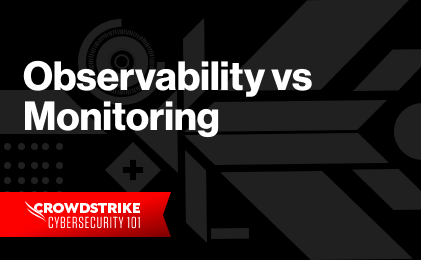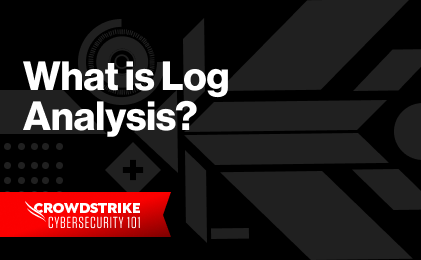Definition of MTTR
Mean time to repair (MTTR) is a key performance indicator (KPI) that represents the average time required to restore a system to functionality after an incident. MTTR is used along with other incident metrics to assess the performance of DevOps and ITOps, gauge the effectiveness of security processes, evaluate the effectiveness of security solutions, and measure the maintainability of systems.
Service level agreements with third-party providers typically set expectations for MTTR, although repair times are not guaranteed because some incidents are more complex than others. Along the same lines, comparing the MTTR of different organizations is not fruitful because MTTR is highly dependent on unique factors relating to the size and type of the infrastructure and the size and skills of the ITOps and DevOps team. Every business has to determine which metrics will best serve its purposes and how it will put them into action in their unique environment.
Difference Between Common Failure Metrics
Modern enterprise systems are complicated and they can fail in numerous ways. For these reasons, there is no one set of incident metrics every business should use — but there are many to choose from, and the differences can be nuanced.
Mean Time to Detect (MTTD)
Also called mean time to discover, MTTD is the average time between the beginning of a system failure and its detection. As a KPI, MTTD is used to measure the effectiveness of the tools and processes used by DevOps teams.
To calculate MTTP, select a period of time, such as a month, and track the times between the beginning of system outages and their discovery, and then add up the total time and divide it by the number of incidents to find the average. MTTD should be low. If it continues to take longer to detect or or discover system failures (an upward trend), an immediate review should be conducted of the existing incident response management tools and processes.
Mean Time to Identify (MTTI)
This measurement tracks the number of business hours between the moment an alert is triggered and the moment the cybersecurity team begins to investigate that alert. MTTI is helpful in understanding if alert systems are effective and if cybersecurity teams are staffed to the necessary capacity. A high MTTI or an MTTI that is trending in the wrong direction can be an indicator that the cybersecurity team is suffering from alert fatigue.
Mean Time to Recovery (MTTR)
Mean time to recovery is the average time it takes in business hours between the start of an incident and the complete recovery back to normal operations. This incident metric is used to understand the effectiveness of the DevOps and ITOps teams and identify opportunities to improve their processes and capabilities.
Mean Time to Resolve (MTTR)
Mean time to resolve is the average time between the first alert through the post-incident analysis, including the time spent ensuring the failure will not re-occur. It is measured in business hours.
Mean Time Between Failures (MTBF)
Mean time between failures is a key performance metric that measures system reliability and availability. ITOps teams use MTBF to understand which systems or components are performing well and which need to be evaluated for repair or replacement. Knowing MTBF enables preventative maintenance, minimizes reactive maintenance, reduces total downtime and enables teams to prioritize their workload effectively. Historical MTBF data can be used to make better decisions about scheduling maintenance downtime and resource allocation.
MTBF is calculated by tracking the number of hours that elapse between system failures in the ordinary course of operations over a period of time and then finding the average.
Mean Time to Failure (MTTF)
Mean time to failure is a way of looking at uptime vs. downtime. Unlike MTBF, an incident metric that focuses on repairability, MTTF focuses on failures that cannot be repaired. It is used to predict the lifespan of systems. MTTF is not a good fit for every system. For example, systems with long lifespans, such as core banking systems or many industrial control systems, are not good subjects for MTTF metrics because they have such a long lifespan that when they are finally replaced, the replacement will be an entirely different type of system due to technological advances. In cases like that, MTTF is moot.
Conversely, tracking the MTTF of systems with more typical lifespans is a good way to gain insight into which brands perform best or which environmental factors most strongly influence a product’s durability.
Benefits of MTTR for DevOps and ITOps
MTTR is intended to reduce unplanned downtime and shorten breakout time. But its use also supports a better culture within ITOps teams.
When incidents are repaired before users are impacted, DevOps and ITOps are seen as efficient and effective. Resilient system design is encouraged because when DevOps knows its performance will be measured by MTTR, the team will build apps that can be repaired faster, such as by developing apps that are populated by discrete web services so one service failure will not crash the entire app. MTTR, when done properly, includes post-incident analysis, which should be used to inform a feedback loop that leads to better software builds in the future and encourages the fixing of bugs early in the SDLC process.
How to Calculate Mean Time to Repair
The MTTR formula is straightforward: Simply add up the total unplanned repair time spent on a system within a certain time frame and divide the results by the total number of relevant incidents.
Learn More
For example, if you have a system that fails four times in one workday and you spend an hour repairing each of those instances of failure, your MTTR would be 15 minutes (60 minutes / 4 = 15 minutes).
However, not all outages are equal. The time spent repairing a failed component or a customer-facing system that goes down during peak hours is more expensive in terms of lost sales, productivity or brand damage than time spent repairing a non-critical outage in the middle of the night. Organizations can establish an “error budget” that specifies that each minute spent repairing the most impactful systems is worth an hour of minutes spent repairing less impactful ones. This level of granularity will help expose the true costs of downtime and provide a better understanding of what MTTR means to the particular organization.
How to Reduce MTTR
There are three elements to reducing MTTR.
- The first is a defined strategy for managing the resolution process, which should include a post-incident analysis to capture lessons learned.
- Technology plays a crucial role, of course, and the best solution will provide visibility, monitoring and corrective maintenance to help root out problems and build defenses against future attacks.
- Lastly, the skills necessary to mitigate the incident have to be available.
MTTR can be reduced by increasing budget or headcount, but that isn’t always realistic. Instead, deploy artificial intelligence (AI) and machine learning (ML) to automate as much of the repair process as possible. Those steps include rapid detection, minimization of false positives, smart escalation, and automated remediation that includes workflows that reduce MTTR.
MTTR can be a helpful metric to reduce downtime and streamline your DevOps and ITOps teams, but improving it shouldn’t be the end goal. After all, the point of using metrics is not simply improving numbers but, in this instance, the practical matter of keeping systems running and protecting the business and its customers. Use MTTR in a way that helps your teams protect customers and optimize system uptime.
Improve MTTR With a Modern Log Management Solution
Elevate your cybersecurity with the CrowdStrike Falcon® platform, the premier AI-native platform for SIEM and log management. Experience security logging at a petabyte scale, choosing between cloud-native or self-hosted deployment options. Log your data with a powerful, index-free architecture, without bottlenecks, allowing threat hunting with over 1 PB of data ingestion per day. Ensure real-time search capabilities to outpace adversaries, achieving sub-second latency for complex queries. Benefit from 360-degree visibility, consolidating data to break down silos and enabling security, IT, and DevOps teams to hunt threats, monitor performance, and ensure compliance seamlessly across 3 billion events in less than 1 second.


